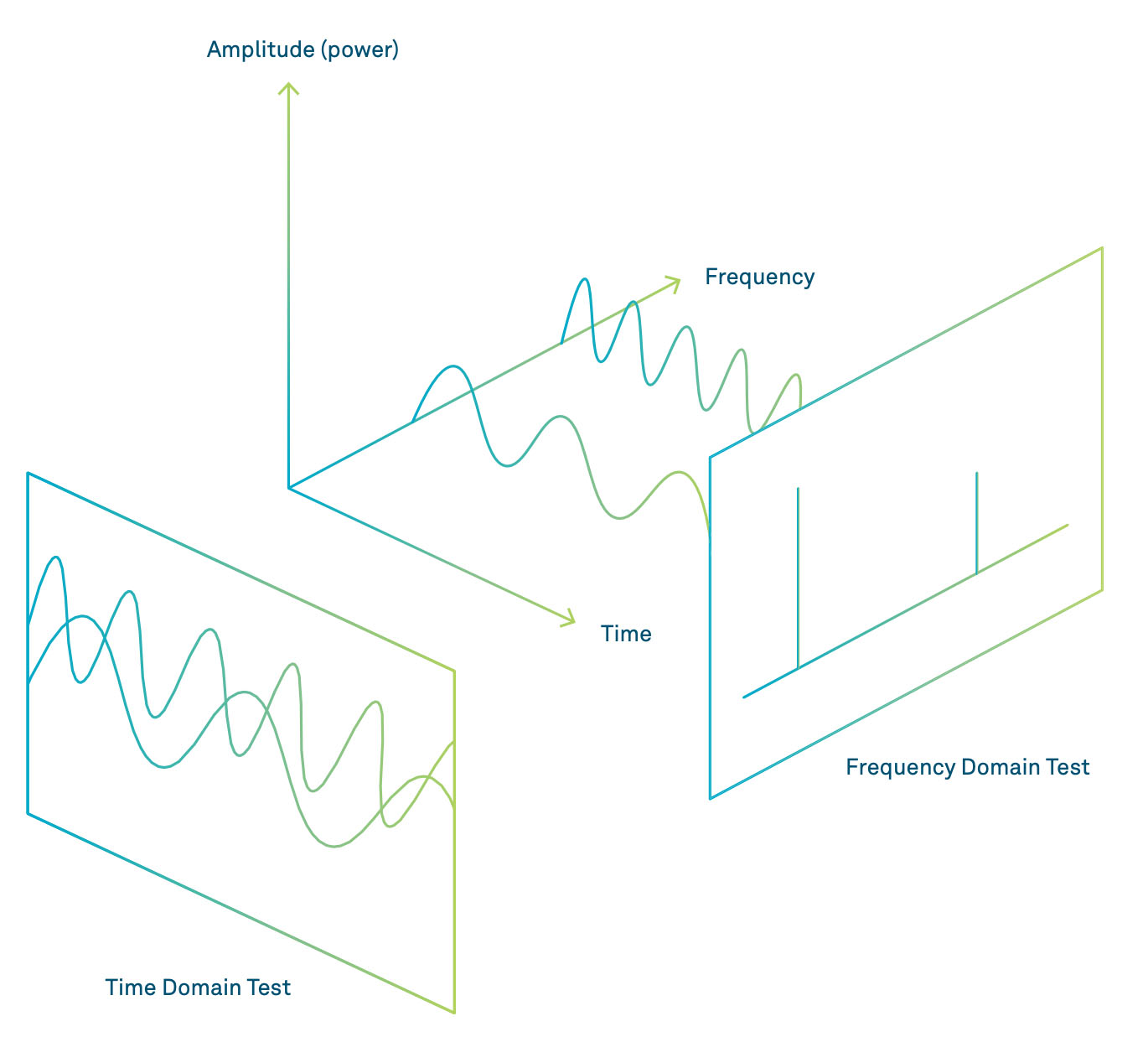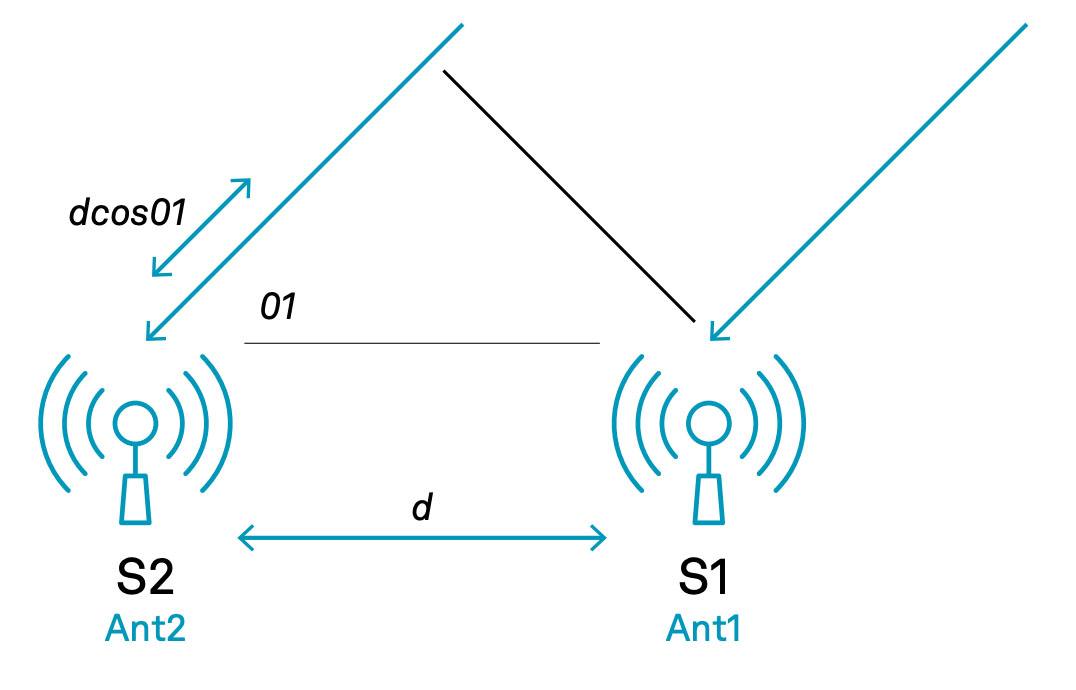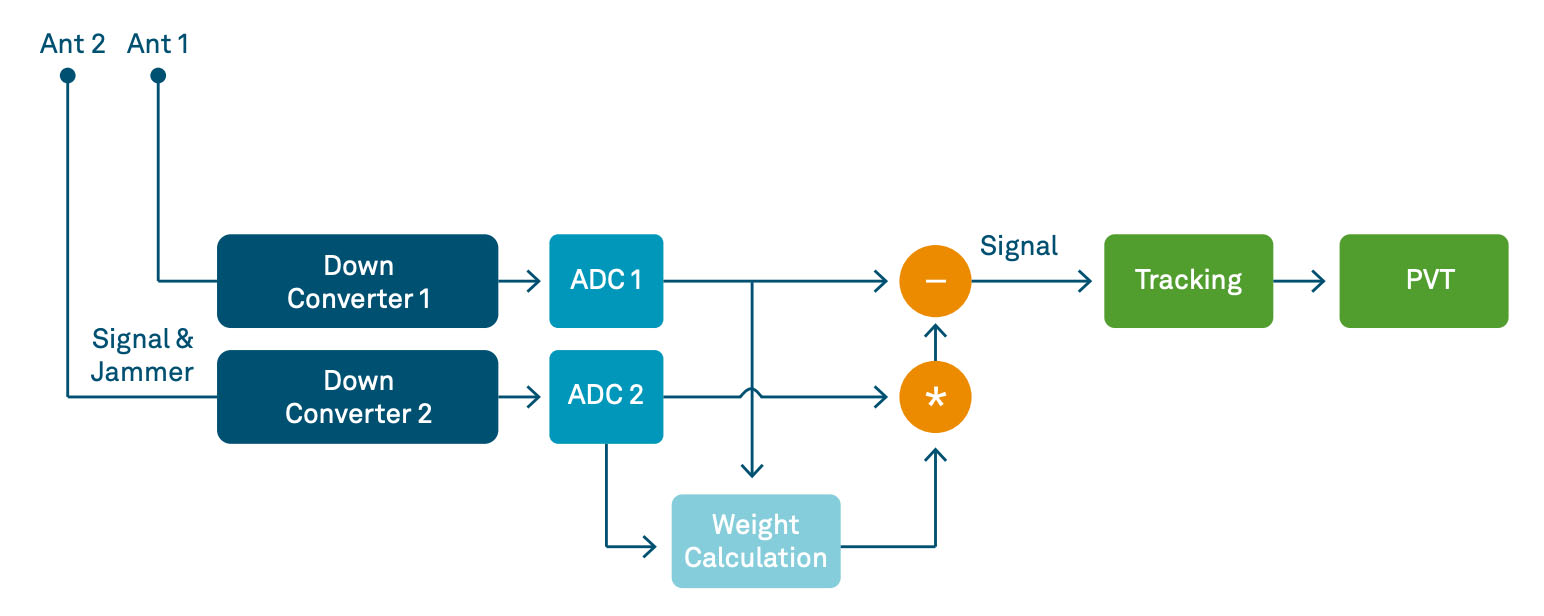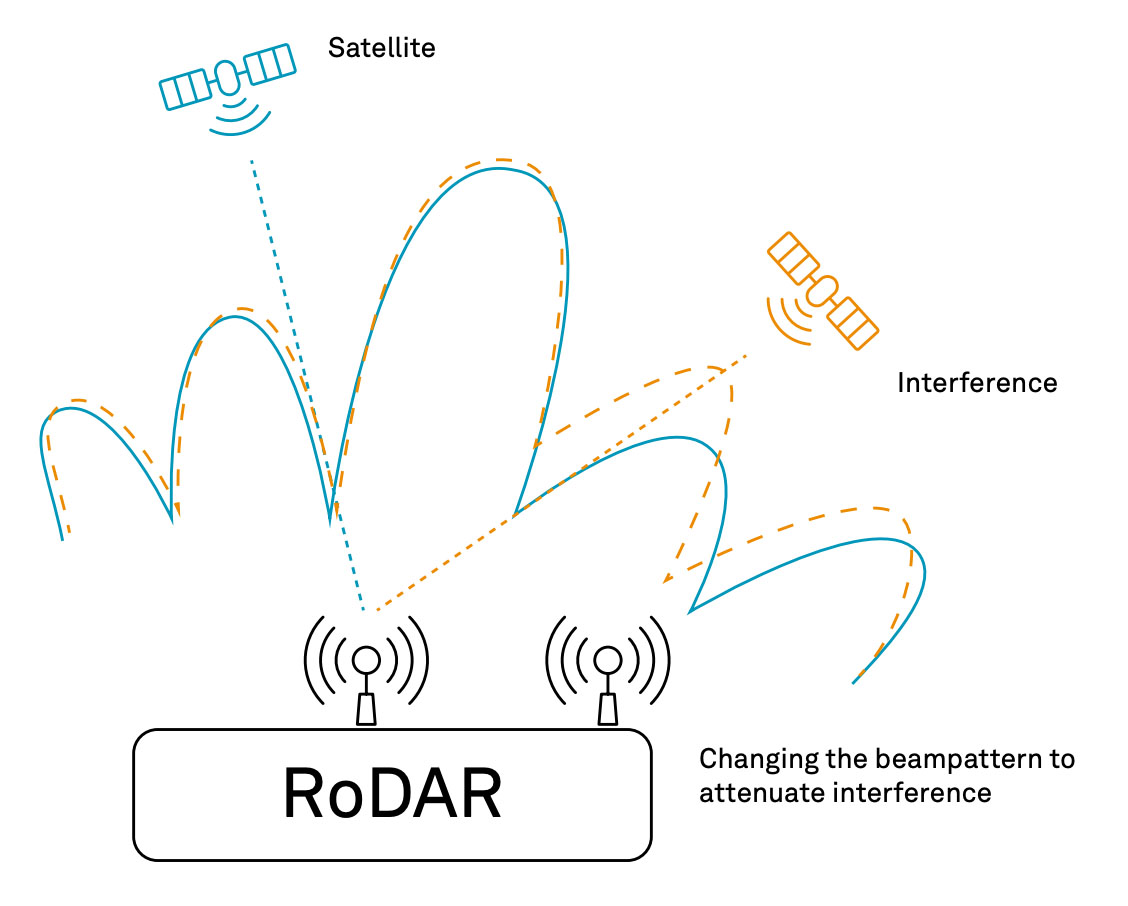AGRICULTURE

This year, Hexagon | NovAtel is introducing a new feature for dual-antenna OEM7 GNSS receiver cards—technology that is unrestricted and commercially available. Powerful anti-jam capabilities previously accessible only to the defence industry and select customers are now within the reach of anyone needing interference resiliency.
The first GNSS receiver-based anti-jam mitigation, built right into the receiver and its positioning engine, will be revealed later this year by NovAtel. It was designed into the OEM7 years ago by NovAtel engineers. This feature is firmware-enabled and can be turned on without the need for additional hardware.
“We are so excited to finally offer this OEM7 capability,” said Sandy Kennedy, vice president of innovation at Hexagon’s Autonomy & Positioning division. “It’s been sleeping on every dual-antenna OEM7 receiver shipped, and now you can awaken it! A complete, enclosed, commercial GNSS anti-jam system for under 4W of power! That is a great deal for your power budget. Multi-constellation and multi-frequency support protects with diversity, and then there’s active anti-jamming on at least one GNSS band if the situation turns very hostile.”
As an example of newly enabled use cases, the designers and/or operators of small unmanned aerial vehicles (UAVs) weighing less than 5 kg (12 lb) can now carry out commercial survey and mapping tasks in environments rife with interference and jamming. These jobs would previously have required much heavier equipment drawing several watts of power, limiting the applications and vehicles where anti-jamming could be enabled. The critical importance of reduced weight and battery use would have eliminated anti-jamming from consideration in such cases. Now, a robust anti-jamming solution is now achievable with commercially available firmware.
The same holds true for small last mile delivery robots and other autonomous machines, where low size, weight and power (SWaP) are also important. This innovation offers a very significant competitive advantage.
The name of this new NovAtel firmware is RoDAR, which stands for Robust Dual-Antenna Receiver. This introduces anti-jamming mitigation into all commercial markets. Anyone with a dual-antenna OEM7 receiver such as the OEM7720, PwrPak7D, PwrPak7D-E1, PwrPak7D-E2 or CPT7 can add powerful anti-jamming mitigation to their operational arsenal.
RoDAR joins—and greatly expands—NovAtel’s GNSS Resilience and Integrity Technology (GRIT) suite of anti-jamming tools, available through the firmware. GRIT also includes the Interference Toolkit (ITK), Spoofing Detection and Time-Tagged Digitised Samples. RoDAR interference mitigation constitutes a separate solution from NovAtel’s GPS Anti-Jam Technology (GAJT), which is export controlled technology designed to be used as additional equipment at the input of a generic GNSS receiver.
As a reference product for anti-jamming, GAJT uses CRPA antennas to connect to any existing GNSS receiver. RoDAR, on the other hand, is only available on OEM7 receivers. It offers a low SWaP anti-jam solution for users and powerful protection from jamming at the same power consumption as an ITK enabled PwrPak7 (~3.75 W).
RoDAR is built-in and available through a firmware upgrade on any dual-antenna OEM7 receiver card as part of NovAtel’s suite of GNSS Resilience and Integrity Technology (GRIT) firmware.
GRIT has, until now, detected interference. Adding RoDAR enhances that capability by offering an active anti-jamming tool that uses spatial processing to protect against all interference types, including the mitigation of wideband interference.
GRIT provides situational awareness tools to enhance a solution’s resiliency to interference:
RoDAR takes RF resiliency to the next level, transforming the dual-antenna OEM7 into the world’s first GNSS receiver with anti-jam mitigation with no additional hardware requirement.
“It would be fair to say that RoDAR can be the best and most powerful anti-jamming and anti-spoofing solution for non-military applications,” said Neil Gerein, senior director of marketing at Hexagon’s Autonomy & Positioning division.
The OEM7 receiver has always provided many other advanced features such as real-time kinematic (RTK) and precise point positioning (PPP) capabilities, SPAN GNSS+INS technology, ALIGN firmware and more. Now users can make it more powerful than ever.
The key to RoDAR’s capability comes from the use of dual-antennas, which enable signal processing in the spatial domain. The antennas need to be spaced only 10 cm (4 in) apart. RoDAR uses the two antennas to identify interference/jamming sources and builds resiliency against jamming and spoofing attempts.
GAJT, Spoofing Detection, ITK and Time-Tagged Samples process GNSS signals in the time and frequency domains.
The spatial anti-jam protection provided by RoDAR not only detects but also mitigates all interference types.
When analog signals are digitized, we can represent the signal in different ways. For example, Figure 1 shows signals in the time domain and the corresponding signals in the frequency domain. In the frequency domain, narrowband interference appears as a spike or a narrow rectangle of power.

Using digital filters with the ITK functionality of GRIT, we can remove the narrowband interference. If the interference is wideband and we try to remove it with a wide filter, we will also remove too much of the GNSS signal and we won’t be able to track the satellites any longer. See Figure 2.
Processing in the spatial domain, however, expands this resiliency to both narrowband and wideband interference
through a dual-antenna array and a minimum power distortion-less response (MPDR) beam-forming method. With more than one antenna, the interfering signal will arrive at each antenna’s element at a different time and phase. RoDAR can then start processing to change the gain of the combined antennas in the direction of the interference.
In a single-source jamming case, the phase difference between the two antennas is the same for all the jamming signals. The authentic signals impose alternative spatial phase differences.

When jamming is detected, the RF signals from two antennas are passed to the null-steering weight calculation unit after down conversion and digitisation. See Figure 3.
Authentic signals are summed up non-constructively while the spoofing and jamming terms are combined constructively.
Then, the second antenna signal undergoes phase rotation and gain compensation and is removed from the first antenna signal. The resultant samples are adjusted and combined, are jammer and spoofer free, then passed on to the tracking and position, velocity and time (PVT) solution module. See Figure 4.



“Now, why is the spatial domain so important?” Gerein posed.
“When a jammer comes along, in the time domain you could do pulse-blanking and you could take out just the part
of the time when the bad guy was in there jamming. Frequency domain is, ‘Oh, I’ve got somebody interfering, I’m going to dial in my spectrum analyser, create a digital filter and I’m going to take out that frequency.’
“Spatial domain doesn’t care what’s happening in time or frequency. You can take anything that you could do in the time and frequency domains and do it spatially. It’s really the way forward in terms of anti-jam protection.”
“The only way to go against wideband noise is spatial processing: you stop that from coming in. The threats of wideband noise, by the laws of mathematics, can only be resisted with the use of spatial processing.”
To understand how spatial processing is applied for mitigation, see Figure 5. Using two antennas enables performing a weight calculation to determine there’s interference coming in. Using RoDAR, the receiver changes the antenna gain pattern in that direction.
A RoDAR user doesn’t have to worry about characterising the type of GNSS jamming encountered, whether it’s continuous wave, pulse or chirp jamming; someone relying on time or frequency domain signal processing would need to know the type of jamming before being able to mitigate against it. No matter what method the jammer throws at you, with RoDAR you have protection and mitigation to steer the interference right out of your system’s inputs.
RoDAR jamming detection and mitigation doesn’t require post-event data analysis to identify whether the signal was spoofed or jammed or not. RoDAR keeps an active lookout while tracking the signal, so users can go on doing their job.
“RoDAR will give you an indication, an alert that jamming is happening, but it just keeps on trucking,” Gerein said. “If it didn’t give me that alert, if that little red light didn’t come on, I wouldn’t even know because I would never lose my position. If you didn’t happen to be looking at the red light, you’d just be happy as can be because you’re still getting your solution.”
It’s almost a no-brainer solution. The user doesn’t have to worry about jamming. The mitigation is happening right there in the receiver.
“Now, a few things on the full disclosure side,” Gerein added. “With any anti-jam solution, RoDAR or GAJT, you name it, there may eventually come a time that you get so close to the jamming source that the interferer is going to get so loud that your solution will start to degrade. It’s like we tell customers, you can put on your noise-cancelling headphones and walk toward a jet airplane, but you’re eventually going to get so close that it’s going to damage your hearing.
“It’s the same thing with any interference. As you get closer to the jammer, your solution is going to start to degrade. But what’s your choice? You can keep your mission going on much longer, or carry out missions in some places where before you wouldn’t be able to at all, because now you have anti-jam protection.
“So, it is important for us to put on that red light and say, ‘Oh by the way, RoDAR’s active.’ Because as you get closer to the jammer, you might be able to say, ‘You know what, it is getting worse. I had better go see what the heck’s going on here. Maybe somebody is jamming me because they’re coming to shoot down my UAV, or make it crash. Let’s get that UAV home now because it’s a valuable asset.”
“To be able to do the resiliency-building we’re doing, it has to be done at a really high speed,” Gerein said.
“And by high speed I mean megahertz, the centre speed where the OEM7 is doing signal processing. That’s where the magic happens. It’s unique to NovAtel because we built it into our MINOS7 application-specific integrated circuit (ASIC) for the OEM7 years ago. Now we’re bringing that to life.”
“We did that upfront. That’s what enables you to null-steer and do it really, really super-fast, with some big-boy mathematics.
“Now the markets are ready and the technology is ready for people to start saying, ‘Oh, I can do anti-jamming now because I don’t need to have the same [high] level of performance I’d have on a GAJT.’”
The GAJT portfolio is used worldwide because they work very reliably to protect against jamming and interference, no matter what the environment and no matter what GNSS receiver the user has.
GAJT antenna systems, comprised of controlled reception pattern antennas (CRPAs) and sophisticated electronics, use multiple antenna elements to control the amount of signal received from a particular direction. When GAJT senses interference from one direction, it turns down the antenna gain for that direction, similar to turning down the volume. This reduces the amount of interference received so true and accurate GNSS signals can be received from other directions. See Figure 1.
“What GAJT does,” Gerein explained, “is sniff the signal, detect interference and say the jamming is coming from that direction so I’m going to make the antenna less powerful in that direction.”
GAJT antenna systems can be used with any GNSS receiver, that is to say they are GNSS-agnostic. They can be installed with and perform anti-jamming for any GNSS receiver, however its weight at 7.5 kilos (16.5 lb) and measuring 29 x 12 cm (11.5 x 4.75 inches) typically dictates the kind of platform that can take advantage of GAJT. Some GAJT models are also restricted to military use, as they are export controlled.
RoDAR users won’t need to put the added SWaP and cost of additional hardware into their systems; that’s what makes it really powerful. And it is available only on OEM7.
RoDAR offers 30 dB of nominal protection. It is not subject to ITAR or Canada Controlled Goods regulation.
Even when subjected to and eventually overcome by a very powerful and very close jammer, a RoDAR-protected receiver recovers more quickly from the incident. See Figure 6.
“Figures 6 and 7 show the introduction of two different types of interference, chirp and wide band jammers, and the effect on the positioning capability of a RoDAR enabled receiver (green lines) and a non-RoDAR OEM7 receiver (pink lines),” Kennedy said. In this test, only the L1 band is used, she said, both for jamming and positioning. The jammer power is increased until the RoDAR receiver loses positioning capability, and then decreased until the receivers both recover a position solution. With both types of jammers, RoDAR’s spatial mitigation approach is very effective, hanging onto a position much longer and recovering very quickly as the jammer fades.
In a wideband jamming situation, RoDAR can provide additional 27 dB protection versus a non-protected receiver, again recovering faster. See Figure 7.
“With the introduction of a wideband jammer, whose power level is shown in the blue line,” commented Kennedy, “we again examine the reported position standard deviation in both receivers. And again, the RoDAR receiver maintains high quality positioning under a much higher interfering power level than the unprotected receiver and then recovers much more quicker, after being jammed out.”
Once available, RoDAR firmware can be installed on NovAtel’s PwrPak7D dual-antenna receiver card through a firmware upgrade. This enables a powerful receiver-based anti-jam capability when using two antenna elements. The benefit for users is the smallest SWaP anti-jam solution available—and it’s widely available for commercial applications.
Read the full PDF here: